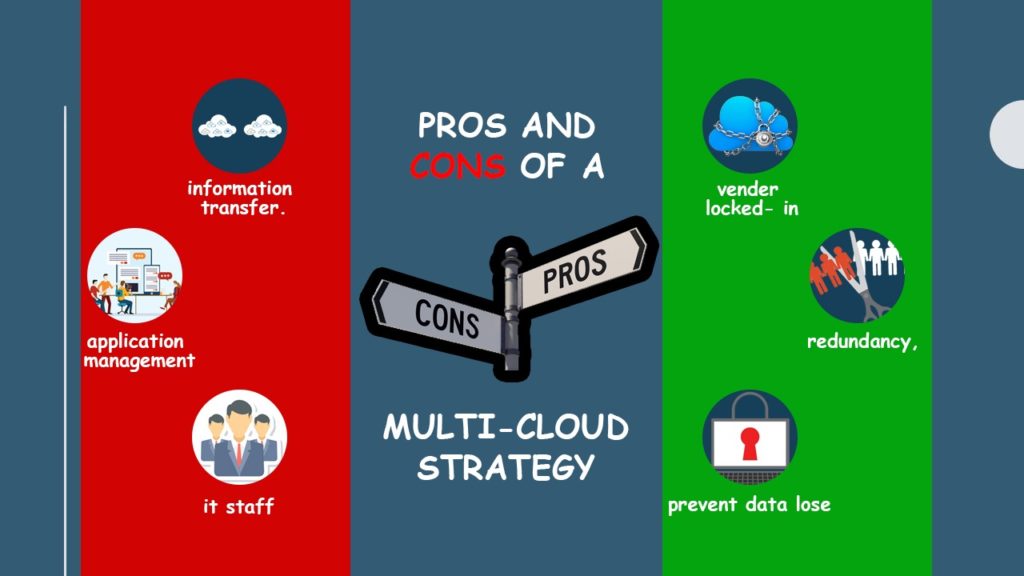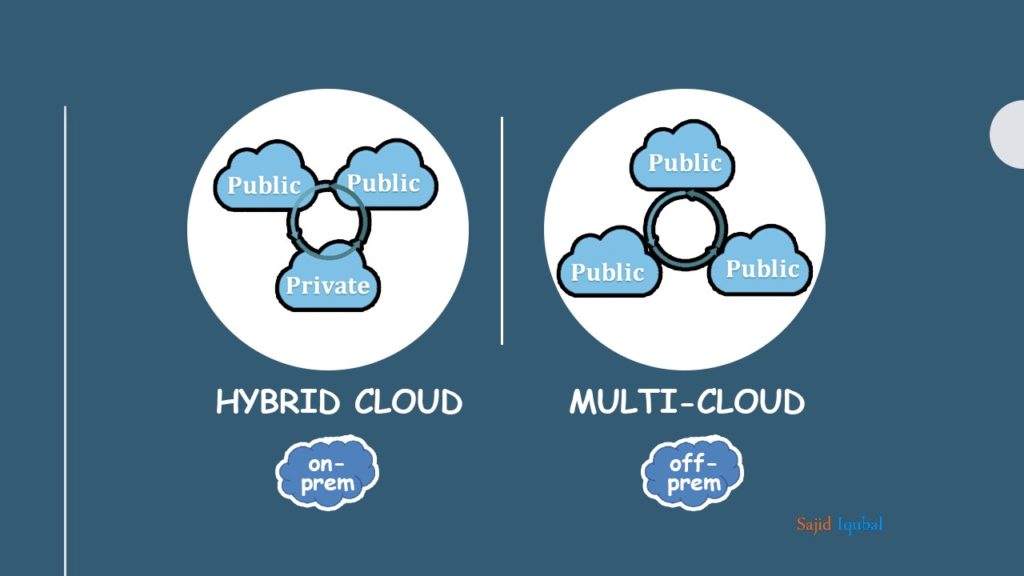There is a lot of hype about businesses adopting multi-cloud strategies using public, private, and hybrid cloud services. Businesses, especially mid-market and enterprise-level industries can use a multi-cloud strategy as a smart investment by leveraging its flexible performance and virtual infrastructure benefits.
A multi-cloud strategy is the use of multiple cloud computing services. Although multi-cloud deployments can refer to any software as a service (SaaS) or any implementation of the platform as a service (PaaS) cloud offerings, today, it is generally referred to as infrastructure as a service (IaaS) environment.
Vendor lock-in and Redundancy concerns drive many multi-cloud deployments today, but they are also driven by business and technical goals. These goals may include using more price-competitive cloud services or taking advantage of the speed, capacity, or features offered by a particular cloud provider in a particular demographic.
Also, some organizations pursue multi-cloud strategies for data sovereignty reasons. Some laws, regulations, and corporate policies require enterprise data to physically reside in certain places. Multi-cloud computing can help organizations meet those requirements because they can choose from data center areas or availability areas of multiple IaaS providers. This flexibility where cloud data resides also enables organizations to locate as few resources as possible to end-users to achieve optimal performance and latency.
Common Uses for Multi-Cloud Computing
Initially, many organizations adopted a multi-cloud strategy because they were uncertain about cloud reliability. Multi-cloud is still seen as a way to prevent data loss or downtime due to the failure of the localized component in the cloud. The ability to avoid vendor lock-in was also the initial driver of multi-cloud adoption.
A multi-cloud strategy also allows the ability to select multiple cloud services or features from different providers. This is helpful because some cloud environments are better suited than others for a particular task.
For example, a fixed cloud platform can handle a large number of requests per unit time, which requires smaller data transfers on average, while a separate cloud platform may perform better for smaller numbers per unit time, incorporating large data transfers. Some cloud providers also offer larger data analytics tools or other specialized capabilities, such as machine learning, than their competitors.
What are the points that decide the strategy of Multi-Cloud?
There are 5 points which decides the strategy of multi-Cloud:
- Multi-Cloud Sourcing
Multi-cloud sourcing deploys applications on two or more cloud platforms. Increased flexibility is one of the biggest appeals of a multi-cloud strategy. Companies avoid vendor lock-in by deploying workloads on different cloud platforms based on cost and application needs.
- Multi-Cloud Architecture
Multi-cloud architecture provides an environment where businesses can build secure and powerful cloud environments outside of traditional infrastructure.
- Multi-Cloud Governance
The multi-cloud governance is necessary for the rapid distribution of cloud services while meeting the needs of the enterprise for budget control, visibility, security, and compliance. It can be divided into two areas: cloud services brokerage and control-plane abstraction.
- Multi-Cloud Security & Cost
Multi-cloud security and cost is a comprehensive cloud security solution that protects and prevents enterprise and customer data, assets, and applications from advanced security threats and cyberattacks across multiple cloud infrastructure and environments.
- Multi-Cloud Integration
A multi-cloud integration involves using more than one cloud vendor to host an organization’s data, applications, or infrastructure. The term Multi-Cloud usually refers to using more than one of the large public cloud hosts.
Pros and Cons of a Multi-Cloud Strategy

There are several commonly cited benefits for multi-cloud computing, such as the ability to avoid vendor lock-in, the ability to find the optimal cloud service for a particular business or technical requirement, increase redundancy, and other beneficial uses described above.
However, there are some potential drawbacks. For example, most public cloud providers offer volume discounts, where prices are reduced because customers buy more of a particular service. It becomes more difficult for an organization to qualify for those discounts when it does not center its business with a single cloud provider.
Also, a multi-cloud deployment requires IT, staff, with multiple types of cloud platforms or provider expertise. Workload or application management can also be a challenge in multi-cloud computing, as information goes from one cloud platform to another.
Multi-Cloud Computing VS Hybrid Cloud Computing

Multi-cloud and hybrid cloud computing are similar, but there are different IT infrastructure models.
In general, the hybrid cloud relates to a cloud computing environment that uses a mixture of on-premises, private cloud, a public cloud, and a third-party cloud with orchestration between the two. An enterprise often adopts a hybrid cloud to achieve a specific task, such as the ability to run workloads at home and then burst into the public cloud when the spike is demanded.
Multi-cloud computing, as noted above, usually refers to the use of multiple public cloud providers, and seems to be the best for any organization in the way a generic approach to managing and paying for cloud services.
However, the multi-cloud doesn’t stop the hybrid cloud, and the hybrid cloud may be part of a multi-cloud deployment. The two models are not either / or status; It simply depends on what a business hopes to achieve.
Common vendors used in multi-cloud computing
There is not a single multi-cloud infrastructure vendor. Instead, the multi-cloud strategy typically involves a mix of major public cloud providers, such as Amazon Web Services (AWS), Google, Microsoft, and IBM.
However, other cloud vendors may be a good fit for specific needs, such as Oracle, whose cloud offerings include SaaS-based ERP systems, and DigitalOne, which provides a more developer-focused platform.
Final words
Multi-cloud computing provides many benefits for enterprises and allows them to meet their current business needs, including AI and data analysis, machine learning, and cold storage. However, the disadvantages of a multi-cloud strategy include complex structures and management and security concerns.
FAQs
Q. What is a multi-cloud strategy?
Multi Cloud is the use of multiple cloud computing and storage services in a single heterogeneous architecture. With a specific multi cloud architecture that uses two or more public clouds, as well as multiple private clouds, a multi cloud environment aims to eliminate dependence on any single cloud provider.
Q. Why use a multi-cloud strategy?
When IT adopts a multi-cloud strategy it gives the organization leverage rather than a cloud provider. When it becomes clear that the workload can be transferred between providers, the development team can build apps that work between providers. A multi-cloud strategy can also improve reliability.
Q. Is Multi-Cloud reliable?
Another potential threat to the security of multi cloud architecture involves data in use. A lot of measures are taken to keep data safe when it is stored and transmitted in the network.
Q. What is Hybrid Cloud Strategy?
In the simplest terms, a hybrid cloud strategy is all about where to go. In a broader context, a hybrid cloud is an environment that combines a private cloud and a public cloud to allow data and applications to be shared with one and the other.